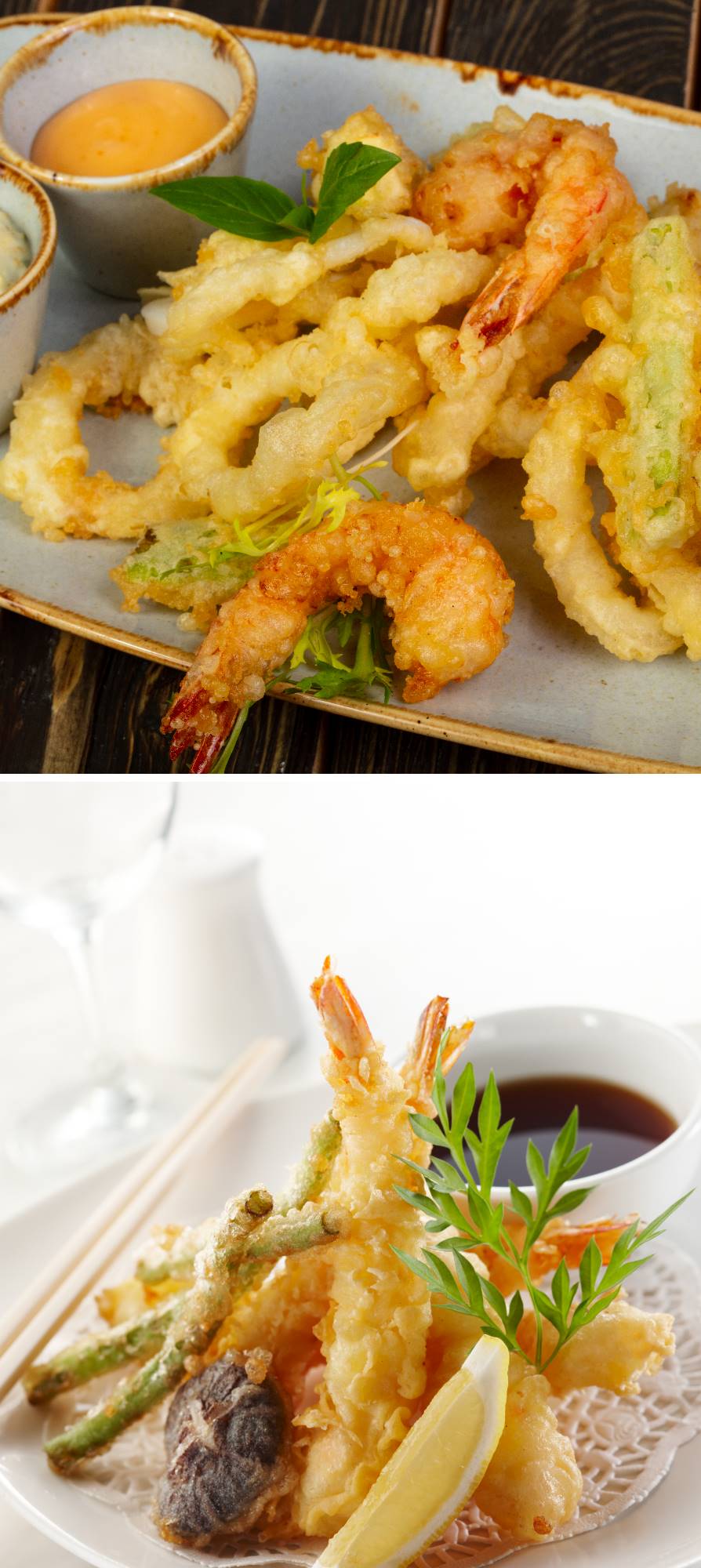Tempura

Got a moment? Good, because a moment is long enough to explain what tempura is and how to make it. Tempura is deep-fried vegetables, fish or shrimps in a light crispy batter. So: choose your favourite vegetables or some prawns, dip them in a batter and fry them briefly. Add a dip. Done.
Tempura is usually served with tentsuyu, a savoury mix of soy sauce, mirin (a kind of rice wine) and dashi (a stock). But you can also just dip it with our Thai Tamarind, Thai Green Chili or Thai Mango Chili Sauce.
We know tempura as a Japanese speciality, but to be fair, they got it from the Portuguese. Already 500 years ago, the Portuguese made peixinhos da horta (literally: small fish from the garden), breaded and fried green beans. These were often eaten during Lent when meat was not allowed for a while.
You could say that the Japanese dish blew in from Portugal. In the middle of the 16th century, a Chinese ship with a few Portuguese sailors on board went off course and ended up in Japan by mistake. When it soon became clear that there was good trade in arms with the Portuguese, the Europeans set up a trading post in Japan. And because one thing leads to another, the Japanese also got to know the peixinhos da horta, soon renamed tempura. They made the batter lighter and fried not only green beans, but also other vegetables, mushrooms and fish.
The most common tempura ingredients in Japan are white fish, prawns, squid, mushrooms, green pepper, aubergine, sweet potato, radishes and carrots. The batter of flour, egg, cold water and possibly some herbs or cornstarch is mixed very briefly (often only a few seconds). It is therefore acceptable for there to be some lumps in the batter.
Tempura is also popular in Thailand. The Thai are rightly more than proud of their much vaunted Thai specialities, but if you ask them which non-Thai cuisine is their favourite, they will probably say the Japanese. Of course, you can eat sushi and ramen in restaurants in Thailand, but also tempura. In fact, many Thai people make it at home. If they do not feel like cooking extensively themselves (and really: this rarely happens), most supermarkets have ready-made tempura batter. Just add some ice water and fry.
In Northern Thailand, they even have their own variant: grabong. This is a very thinly grated vegetable (green papaya, bamboo or Thai pumpkin for example) in a batter of rice flour and coconut milk, no ordinary water. Two other unique ingredients added to flavour the grabong are grated coconut and curry paste.
If you go to a fancy tempura-ya restaurant in Japan, a specialised cook will prepare the tempura in front of you. The cook makes one at a time. You will first get lighter tempura such as prawns, and then tempura with a stronger flavour. It is usually accompanied by rice or noodles, some sour and miso soup.
However, at home, you really don't need to worry about whether you eat the carrot or aubergine first, and you can also eat tempura as a snack. Simply out of the hand. Just make sure you don't let the tempura cool down too much. They really are the most delicious when crispy and warm!


